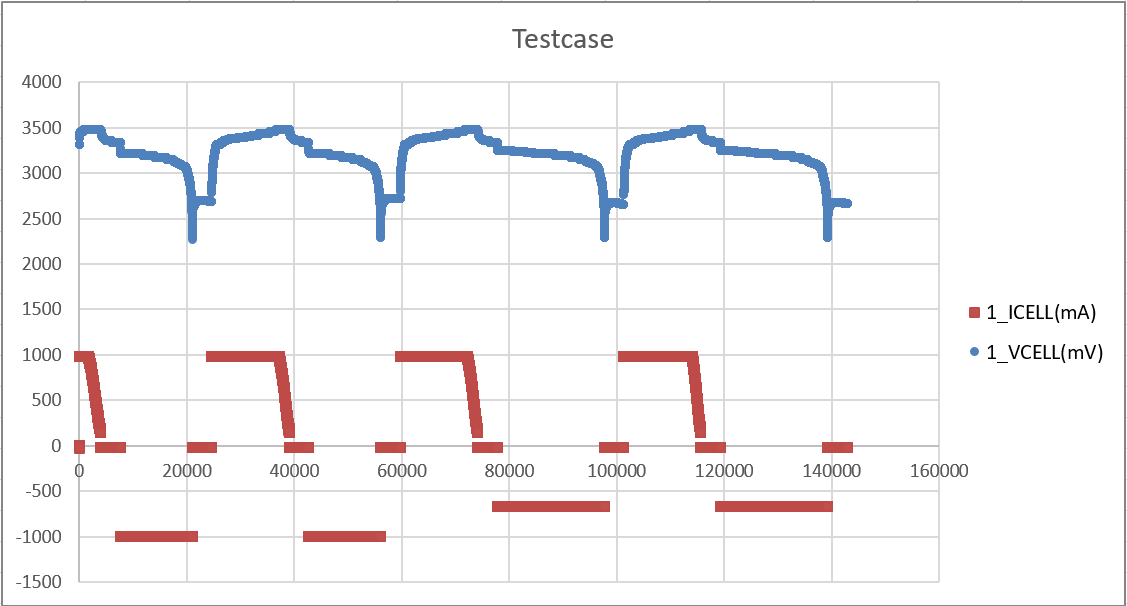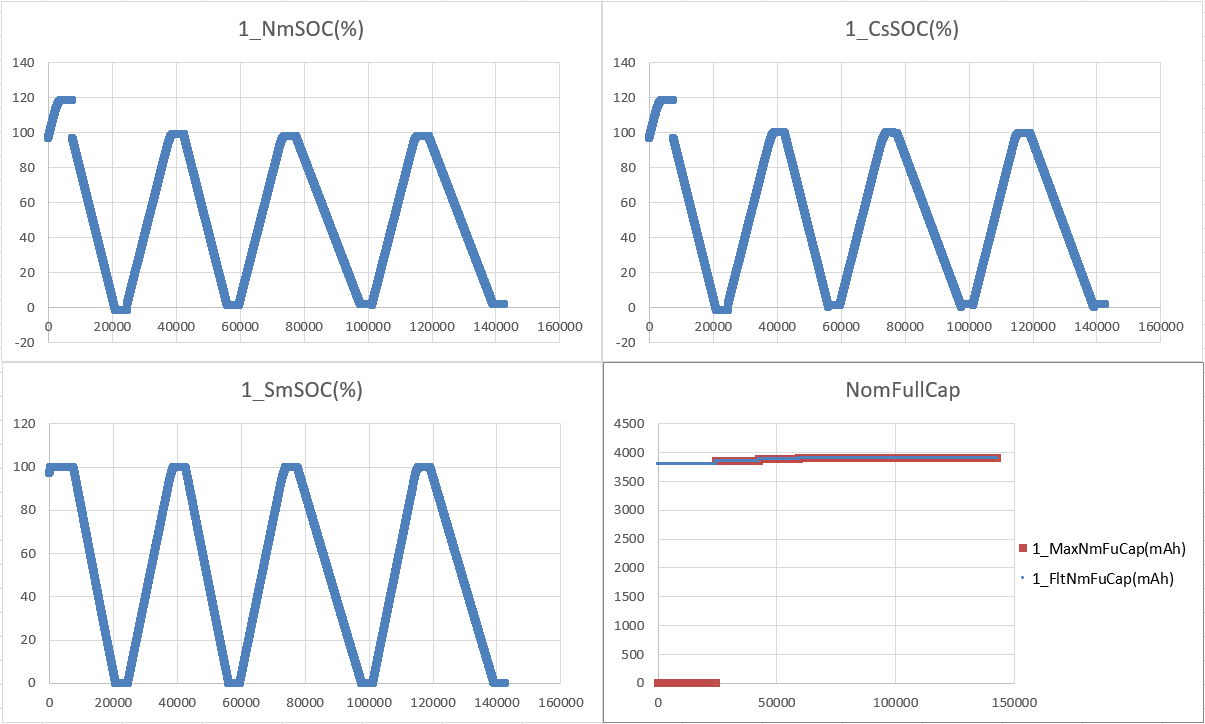SLAAEF5 March 2024 MSPM0G1505 , MSPM0G1505 , MSPM0G1506 , MSPM0G1506 , MSPM0G1507 , MSPM0G1507 , MSPM0L1303 , MSPM0L1303 , MSPM0L1304 , MSPM0L1304 , MSPM0L1304-Q1 , MSPM0L1304-Q1 , MSPM0L1305 , MSPM0L1305 , MSPM0L1305-Q1 , MSPM0L1305-Q1 , MSPM0L1306 , MSPM0L1306 , MSPM0L1306-Q1 , MSPM0L1306-Q1
- 1
- Abstract
- Trademarks
- 1Introduction
- 2Algorithm Introduction
- 3Gauge GUI Introduction
- 4MSPM0 Gauge Evaluation Steps
- 5MSPM0 Gauge Solutions
- 6References
5.2.3.2 Performance Test2 (Load Change)
Here is the test based on a 3800mAh LiFePO4 battery, under 25°C. u16MaxFullChgVoltThd setting is 3800mV. EmptyDhgVoltThd setting is 2300 mV.
Here is the test pattern: Do constant discharge 2 times and then change the load. The Figure 5-16 shows the condition of a battery Cell in the battery pack. Due to sourcemeter power limitation, only simple test are run.
 Figure 5-16 Battery Testcase
Figure 5-16 Battery TestcaseSee the test result in Figure 5-16, you can find at beginning there is a abvious gap for NomSOC, CusSOC and SmoothSOC. It is caused from first OCV calibration error.
Due to residual learn algorithm, you can see that the SmoothSOC can perform perfectly between 0% and 100% when the voltage is reaching the end of discharge voltage (2300mV). Remember at the same time, the EmptySOC needs learning cycles, which means if you do not input iq15AbsEmptySocMatrixInput, the SmoothSOC error will be large when the battery reaches the end of its first discharge voltage.
For different NomFullCap, the FltNomFullCap is updated almost after every rest. With the digital filter help, the NomFullCap gets more and more accurate. After the MaxNomFullCap changes from 0 to a value, it means the output NomFullCap is with an acceptable accuracy.
 Figure 5-17 Battery Test Result
Figure 5-17 Battery Test ResultFigure 5-18 the result for battery pack.
 Figure 5-18 Battery Test Result
Figure 5-18 Battery Test Result